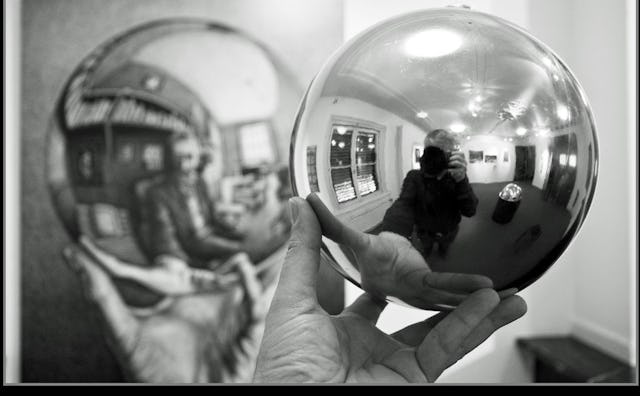You Are a Pattern of Meaningless Symbols

In his 1979 Pulitzer Prize-winning book Gödel, Escher, Bach, Douglas Hofstadter explores this very question. He compares inanimate molecules to “meaningless symbols” and selves to “certain special swirly, twisty, vortex-like and meaningful patterns that arise only in particular types of systems of meaningless symbols.” Selves are the patterns that arise from these meaningless symbols, and the interpretation of the patterns is part of a formal system he calls a “strange loop.” The loop’s circuit calls for tracing experience and circumstance in reality onto these “meaningless symbols,” thereby evoking a measure of meaning. This (according to Hofstadter) is how a self is gained. A system in which meaningless symbols accrue meaning is one that self-perceives; the act of self-awareness is that formal system adopting a self.
If selves arise from the patterns they track in reality, then what’s put back into the world is merely a copy of what we’ve absorbed—it’s recursive. That’s the loop. The “I” inside of us manifests as the “I” we project out and perceive back, and our experience is the experience of ourselves, tossed out and absorbed back, like looking in a mirror. As such, we are all trapped inside these formal systems, so much so that what we see and feel is simply our own projected and reabsorbed material, tagged with our own meaning and registered as perception.
If this is true, the questions remain: Can we ever know another person, really? Can we ourselves be known? Or are we all just balloons bouncing off one another? When speaking to a friend, are we speaking to the part of ourselves we recognize inside the body of another? We look outside ourselves to understand who we are, but if selves are recursions, where should we look?
We tell our own story because we believe it, and hope others do too, and even if somewhere in us a chime of doubt sounds, this doesn’t make us liars—it just means we’re not seeing ourselves in the mirror. It turns out all those Jungian shadows may actually be reflections, and while we may not be able to control the way patterns are made in our brains, we can work with our perceptions, and change our relationship to each image mirrored in our own strange loops.
Photo: Flickr/BertKaufmann
This article was originally published on